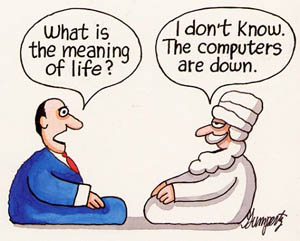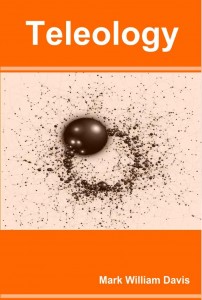 The impossibility of the Chinese Room has implications across the board for understanding what meaning means. Mark Walker’s paper “On the Intertranslatability of all Natural Languages” describes how the translation of words and phrases may be achieved:
The impossibility of the Chinese Room has implications across the board for understanding what meaning means. Mark Walker’s paper “On the Intertranslatability of all Natural Languages” describes how the translation of words and phrases may be achieved:
- Through a simple correspondence scheme (word for word)
- Through “syntactic” expansion of the languages to accommodate concepts that have no obvious equivalence (“optometrist” => “doctor for eye problems”, etc.)
- Through incorporation of foreign words and phrases as “loan words”
- Through “semantic” expansion where the foreign word is defined through its coherence within a larger knowledge network.
An example for (4) is the word “lepton” where many languages do not have a corresponding concept and, in fact, the concept is dependent on a bulwark of advanced concepts from particle physics. There may be no way to create a superposition of the meanings of other words using (2) to adequately handle “lepton.”
These problems present again for trying to understand how children acquire meaning in learning a language. As Walker points out, language learning for a second language must involve the same kinds of steps as learning translations, so any simple correspondence theory has to be supplemented.
So how do we make adequate judgments about meanings and so rapidly learn words, often initially with a course granularity but later with increasingly sharp levels of focus? What procedure is required for expanding correspondence theories to operate in larger networks? Methods like Latent Semantic Analysis and Random Indexing show how this can be achieved in ways that are illuminating about human cognition. In each case, the methods provide insights into how relatively simple transformations of terms and their occurrence contexts can be viewed as providing a form of “triangulation” about the meaning of words.… Read the rest





